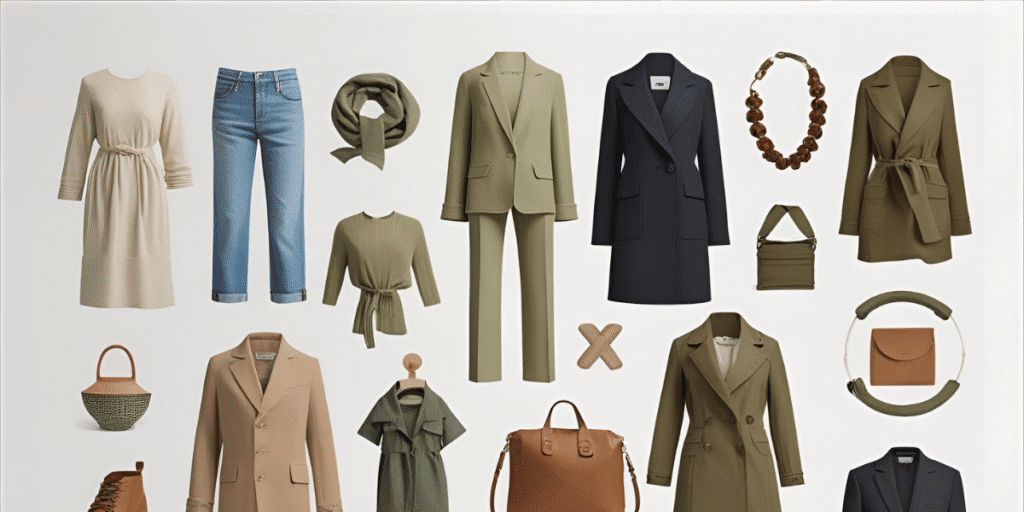In 2022, U.S. men’s fashion witnessed a notable shift toward sustainability, as more men began making conscious decisions about the environmental and ethical impacts of their fashion purchases. This growing awareness reflects the broader movement toward conscious consumerism, fueled by global concerns over climate change and environmental degradation. With more Americans looking to make responsible choices, sustainable fashion has emerged as a priority in men’s wardrobes.
The Rise of Sustainable Fashion Choices
A 2022 survey by Statista revealed that 42% of men in the U.S. purchased at least one sustainable item of clothing in the previous year. This represents a significant increase in eco-conscious buying behavior compared to prior years. As climate change and environmental issues continue to gain traction in global discourse, American consumers—especially men—are becoming more discerning about their fashion choices.
Brands like Patagonia, Everlane, and Allbirds have been at the forefront of this eco-friendly revolution, offering sustainable options that align with both style and environmental values. These brands have adopted practices such as using recycled materials, organic fabrics, and transparent supply chains, which allow consumers to make informed decisions about the products they buy.
Patagonia, for instance, has long been an advocate for environmental sustainability, incorporating recycled materials like plastic bottles and wool into their designs. Allbirds, known for its eco-friendly footwear, uses natural materials such as merino wool and eucalyptus fiber to produce shoes with minimal environmental impact. Everlane follows a similar ethos by offering a variety of wardrobe staples produced with responsibly sourced materials.
Sustainability Beyond Clothing
The sustainable fashion trend is not limited to clothing alone. Accessories and footwear are also being redefined with environmental considerations in mind. Men’s shoes, once dominated by synthetic materials, are now crafted from eco-friendly options. Allbirds’ shoes made from renewable materials, including sugarcane and merino wool, have gained a loyal following for their comfortable yet eco-conscious design.
Bags, belts, and watches are also seeing a shift toward sustainable production. Luxury and everyday brands alike are beginning to embrace sustainable leather alternatives, and recyclable or biodegradable materials. The demand for accessories made with transparency in mind—from ethical labor practices to low-waste production—has risen as consumers increasingly want products that match their sustainability values.
The Environmental Impact of Fashion Choices
The fashion industry is among the most polluting sectors in the world. From excessive water consumption in textile production to carbon emissions and the use of toxic dyes and chemicals, the environmental toll of clothing production is considerable. As awareness of these impacts grows, many consumers are shifting away from fast fashion in favor of brands that prioritize sustainability.
Sustainable fashion provides a solution by reducing waste, promoting eco-friendly materials, and offering better overall quality. This results in longer-lasting products that consumers can wear for years rather than discarding items after just a few uses. The shift toward durability, repairability, and recyclable materials is helping to reshape the future of fashion, challenging the traditionally disposable nature of much of the industry.
For men, this shift also means considering not only the materials used to make clothing and accessories but also the entire lifecycle of the product. Consumers are thinking more carefully about the environmental consequences of their purchases, from production to disposal. As a result, brands that implement ethical sourcing practices and focus on reducing their carbon footprint are gaining favor among eco-conscious shoppers.
Encouraging Brands to Go Green
The increasing demand for sustainable fashion has prompted many brands to improve their environmental practices. Experts are optimistic that this growing trend will push more companies to adopt sustainable measures, such as using renewable energy in production or creating recyclable garments. Innovations in textile technology—such as biodegradable fabrics and waterless dyeing techniques—are expected to drive even further change in the coming years.
At the same time, the accessibility of sustainable options has grown significantly. While eco-friendly fashion was once seen as niche or costly, today’s options cater to a wider range of budgets and preferences. Major retailers and smaller independent brands alike are offering environmentally responsible alternatives, proving that sustainability and style can coexist.
Looking Ahead: The Future of Men’s Fashion
As sustainability continues to influence purchasing decisions, it’s clear that the future of men’s fashion will be shaped by a growing commitment to conscious consumerism. As more brands prioritize eco-friendly practices, men will have more choices when it comes to stylish, sustainable clothing. This is especially important for younger generations, who are more inclined to value sustainability in all areas of their lives, from the products they buy to the companies they support.
The continued rise of sustainable fashion also represents a broader cultural shift toward conscious consumerism. Men’s fashion, once defined largely by trend cycles and mass production, is evolving toward a more thoughtful, responsible approach. By making informed choices, today’s men are helping to usher in a new era of fashion—one that’s better for the planet and future generations.
As we look ahead, sustainability in men’s fashion will not only continue to evolve but will also redefine what it means to shop responsibly, offering stylish, ethical, and eco-friendly alternatives for those who are mindful of their impact on the world.
